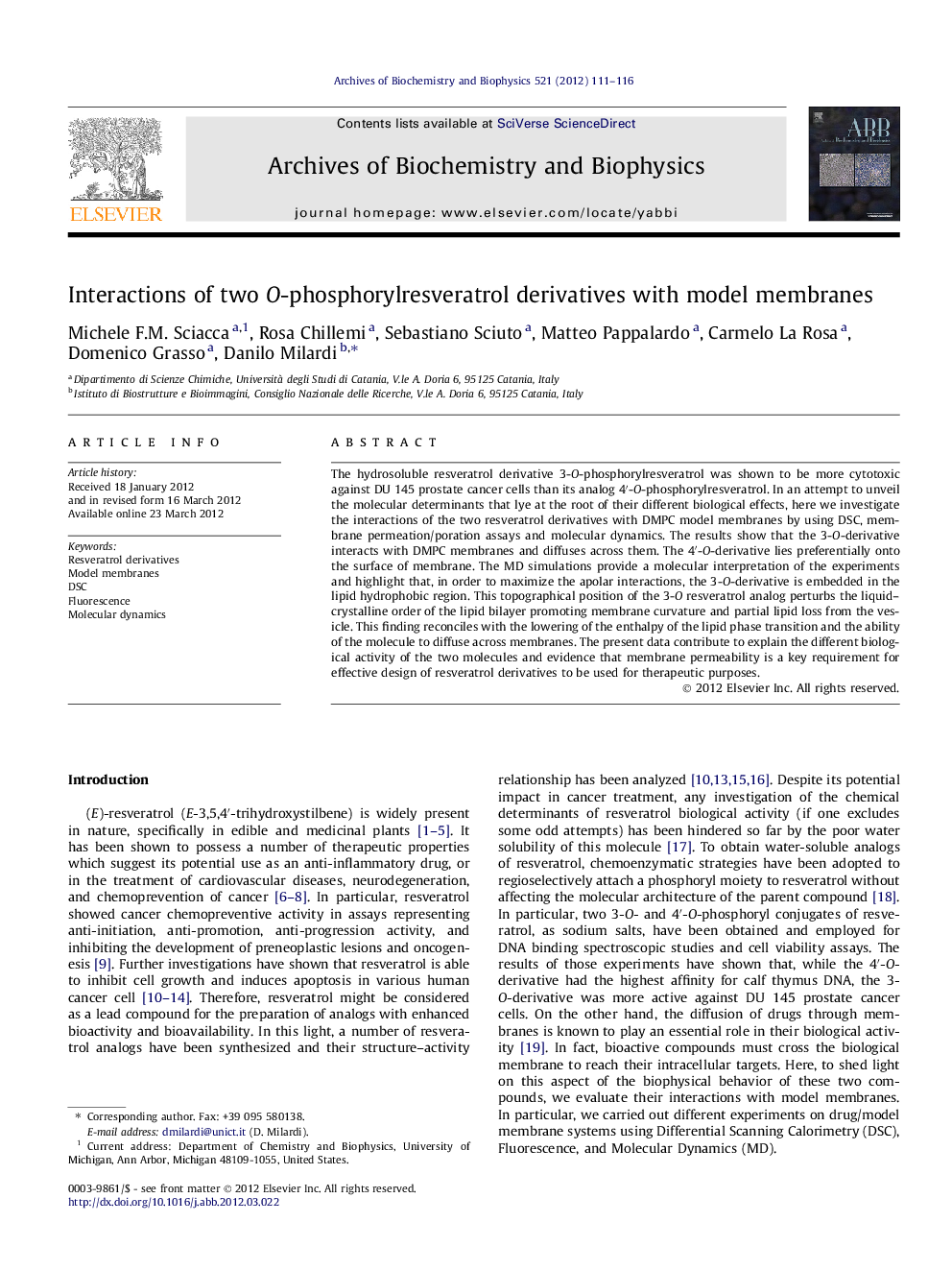| Article ID | Journal | Published Year | Pages | File Type |
|---|---|---|---|---|
| 1925576 | Archives of Biochemistry and Biophysics | 2012 | 6 Pages |
The hydrosoluble resveratrol derivative 3-O-phosphorylresveratrol was shown to be more cytotoxic against DU 145 prostate cancer cells than its analog 4′-O-phosphorylresveratrol. In an attempt to unveil the molecular determinants that lye at the root of their different biological effects, here we investigate the interactions of the two resveratrol derivatives with DMPC model membranes by using DSC, membrane permeation/poration assays and molecular dynamics. The results show that the 3-O-derivative interacts with DMPC membranes and diffuses across them. The 4′-O-derivative lies preferentially onto the surface of membrane. The MD simulations provide a molecular interpretation of the experiments and highlight that, in order to maximize the apolar interactions, the 3-O-derivative is embedded in the lipid hydrophobic region. This topographical position of the 3-O resveratrol analog perturbs the liquid–crystalline order of the lipid bilayer promoting membrane curvature and partial lipid loss from the vesicle. This finding reconciles with the lowering of the enthalpy of the lipid phase transition and the ability of the molecule to diffuse across membranes. The present data contribute to explain the different biological activity of the two molecules and evidence that membrane permeability is a key requirement for effective design of resveratrol derivatives to be used for therapeutic purposes.
Graphical abstractFigure optionsDownload full-size imageDownload high-quality image (466 K)Download as PowerPoint slideHighlights► The 3-O-phosphorylresveratrol interacts with DMPC membranes and diffuse across them. ► The 4′-O-phosphorylresveratrol lies preferentially onto the surface of membrane. ► The MD simulations provide a molecular interpretation of the experiments. ► These data help to explain the different biological activity of the two molecules.
